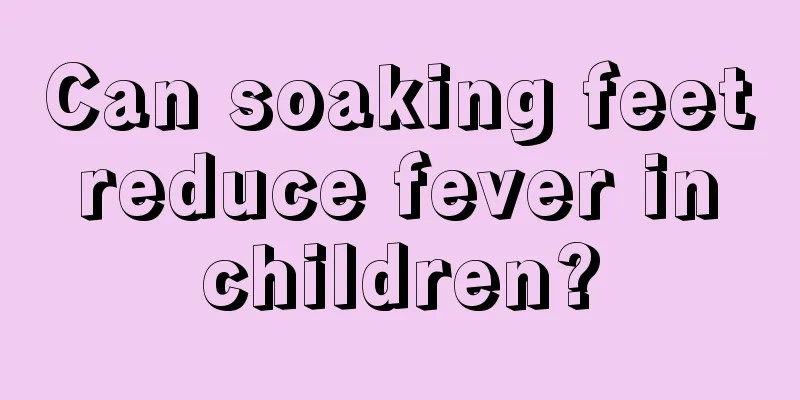How soon can babies swim?

|
With the continuous improvement of living standards, more and more people are beginning to pay attention to their children's health issues. Especially after the baby is born, many parents will let their children receive various exercises as the social situation continues to change. Among them, swimming is a form of exercise that is more beneficial to the child's bone development. It can also increase the child's lung capacity. However, many parents think that the baby is relatively young after birth, and swimming at this time will be dangerous. Let's find out how long it takes for babies to swim. How soon can babies swim? Healthy babies are not afraid of water by nature. Hydrophilicity is their nature. When playing in warm water, they will regard this play as a continuation of their life in the amniotic fluid in their mother's womb. Since babies are active in a familiar environment, they are not afraid of water at all. Even if his head is submerged in water, there is no need to panic, because children have the natural ability to adapt to this environment. A so-called "defensive reflex movement" can protect babies under 6 months old from water harm. If water enters the baby's mouth and nose, breathing will automatically block the water and prevent it from entering the lungs. How old can a baby swim? Strengthening the scientific nature of training is an important principle for infants' early swimming. The steps of infant swimming training can be divided into four stages: In the first stage, babies can start swimming in the bathtub two or three weeks after birth, so that they can learn swimming skills through practice. The reverse of the conditions that continue to lose nature; In the second stage, babies aged two or three months can do some gliding exercises in the water. In the third stage, babies aged 3-6 months can initially learn a certain swimming posture; In the fourth stage, infants aged 6 months to 1 year old begin comprehensive swimming training based on how to hold their breath in water in the previous stage. In addition, it is important to note that babies must be accompanied by their mothers or relatives when swimming, and the water temperature is ideally between 29 and 32 degrees Celsius. At the same time, the baby's diet should be nutritious. In addition to an adequate supply of protein, fat, and sugar, it should also be supplemented with foods rich in vitamins. The benefits of baby swimming Swimming is good for the development of the baby's musculoskeletal system. It can make the baby's muscles, joints, and ligaments that have been curled up for a long time in the womb to stretch easily. Baby swimming can effectively stimulate the development of the baby's bones, joints, ligaments and muscles, promote the baby's height growth, and make the baby physically strong. The benefits of baby swimming to the baby's circulatory system. Baby swimming increases the oxygen consumption of muscles throughout the body. Due to the compression of water on peripheral veins, it effectively promotes blood circulation and improves the baby's heart function. Baby swimming is good for the baby's respiratory system. Baby swimming provides a natural and safe exercise for the baby. After a period of persistence, the baby's chest development and lung capacity will be significantly better than those of babies of the same age. The benefits of baby swimming to the baby's digestive system are that it can promote early excretion of meconium, early disappearance of physiological jaundice, early absorption of nutrients, and early recovery of physiological weight loss. When babies swim, they exercise a lot, expend a lot of physical energy, increase their nutrient intake, and their gastrointestinal motility, so their weight gain is better than that of babies of the same age. The benefits of baby swimming to the baby's nervous system. Baby swimming can effectively promote the development of the baby's brain and nervous system, stimulate the baby's potential, and lay a good foundation for improving children's IQ and EQ. The above is an introduction to how long it takes for babies to swim. After understanding it, we know that children can swim 3 to 6 weeks after birth, and swimming has many benefits for children's bodies. However, it is worth noting that the water temperature must be guaranteed during the child's swimming, and attention must be paid to the waterproofing of the child's umbilical cord, and do not let the child swim for too long at a time. |
<<: Why do children have yellow teeth?
>>: What's wrong with the child's red butt?
Recommend
Eustachian tube analysis for infants
We all know the anatomical structure and physiolo...
What is the appropriate time for babies to breastfeed?
The baby is the center of a family. Our new paren...
Newborn baby herpes
The health of a newborn baby is very important. F...
What should children eat if they have a long cough?
Children's long-term cough cannot be cured. F...
What should I do if my child has allergic rhinitis?
Allergic rhinitis is a common disease in daily li...
What is the standard height of a two and a half year old boy?
Nowadays, many parents measure their children'...
How to do sports training for children?
Children are a very important member of every fam...
Children's recipes and methods
Children of different ages actually need differen...
Why does my child always have a low-grade fever?
Some mothers say that their children always have ...
What to do if the newborn has enlarged ventricles
After a newborn is born, parents, in addition to ...
What to do if your child has small teeth
When a child starts to grow small teeth on his te...
What should you pay attention to after your child's dislocation is fixed?
After a child's dislocation is fixed, he shou...
What should I do if my child has itchy testicles?
For children, because their organs are not fully ...
Two-year-old baby anal pain
A two-year-old baby has anal pain, which is often...
What to do if children have a fever and headache
Fever and headache are common symptoms in childre...









